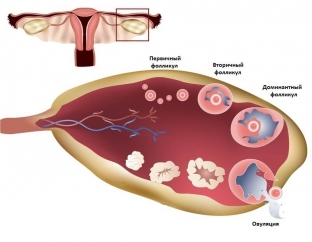The female body is an incredible creation of nature, fraught with many features and mysteries. The sex hormones that are produced in the female body determine all the main differences between men and women: appearance, emotional background, way of thinking, and so on. Every month, a woman's body undergoes cyclical changes that affect the activity of all its organs and systems. Knowing these features and understanding what happens to the body in a certain period is very important for every woman. Estet-portal.com offers to understand the physiology of the menstrual cycle.
Cyclic changes in a woman's body during the menstrual cycle
For about 30 years, the body of every woman is in the reproductive period, that is, a woman aged on average from 17 to 50 years old is able to bear and give birth to a child. Every month a woman's body provides her with such an opportunity through the production of an egg and the creation of optimal conditions for its fertilization and the transformation of an embryo into a fetus. The reproductive function of the female body is carried out due to the activity, first of all, of the uterus and ovaries. In the ovaries, an egg matures every month, and hormones are produced that prepare the uterus to receive a fertilized egg. All these changes occur every month and are called the menstrual cycle.
Menstrual cycle:
- the concept of the menstrual cycle and menstruation: what is it;
- what changes occur in the ovaries during the menstrual cycle;
- what changes occur in the uterus during the menstrual cycle.
The concept of the menstrual cycle and menstruation: what is it
Very often women confuse the concept of the menstrual cycle and menstruation. An important point is also that it is necessary to analyze the state of the hormonal background of a woman strictly on certain days of the menstrual cycle. The menstrual cycle is called cyclical changes in all parts of the female reproductive system. The menstrual cycle begins with the first menstruation and continues until the menopause. Menstruation is the external manifestation of the menstrual cycle. This is bloody discharge from the genital tract of a woman, which periodically occurs as a result of rejection of the endometrium of the uterus, into which a fertilized egg has not implanted. The first day of menstruation coincides with the first day of the menstrual cycle. The duration of each menstrual cycle is the number of days

During each menstrual cycle, a woman's ovaries grow and mature an egg that can be fertilized when a man's sperm enters the uterus. All this happens under the influence of hormones in several main stages:
- the primordial follicle matures in the ovary, which consists of an immature egg located in the follicular and granulosa epithelium;
- later, the follicle enters the preantral stage, while the egg cell enlarges and is surrounded by a membrane;
- antral follicle is characterized by an increase in the number of cells in the granulosa layer that produce follicular fluid;
- the dominant follicle is formed from many antral follicles by the 8th day of the menstrual cycle;
- about 12-14 days of the menstrual cycle, ovulation occurs: the dominant follicle ruptures and a mature and ready-to-fertilize egg cell enters the cavity of the fallopian tubes.






Add a comment